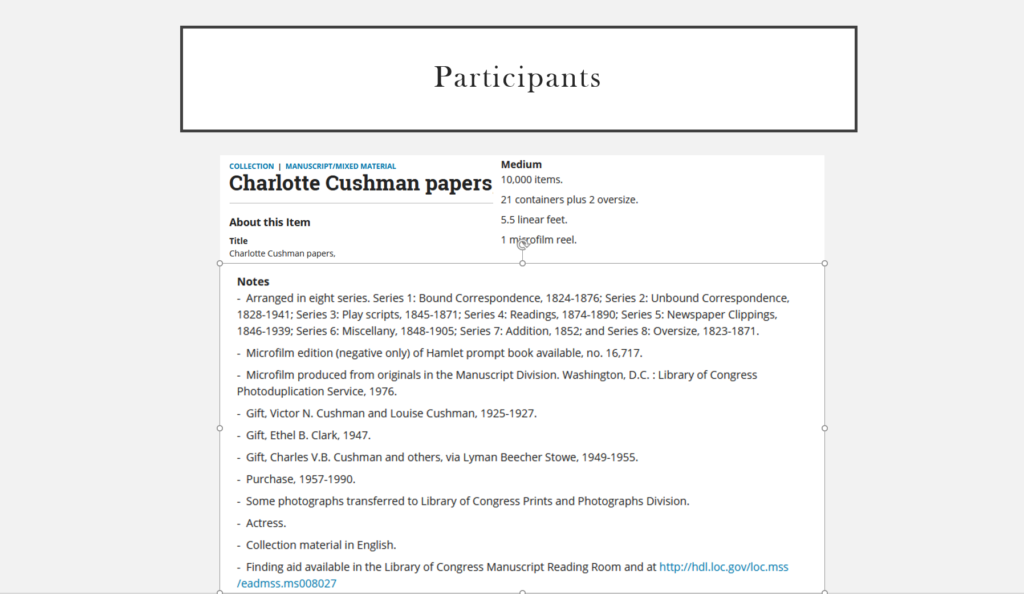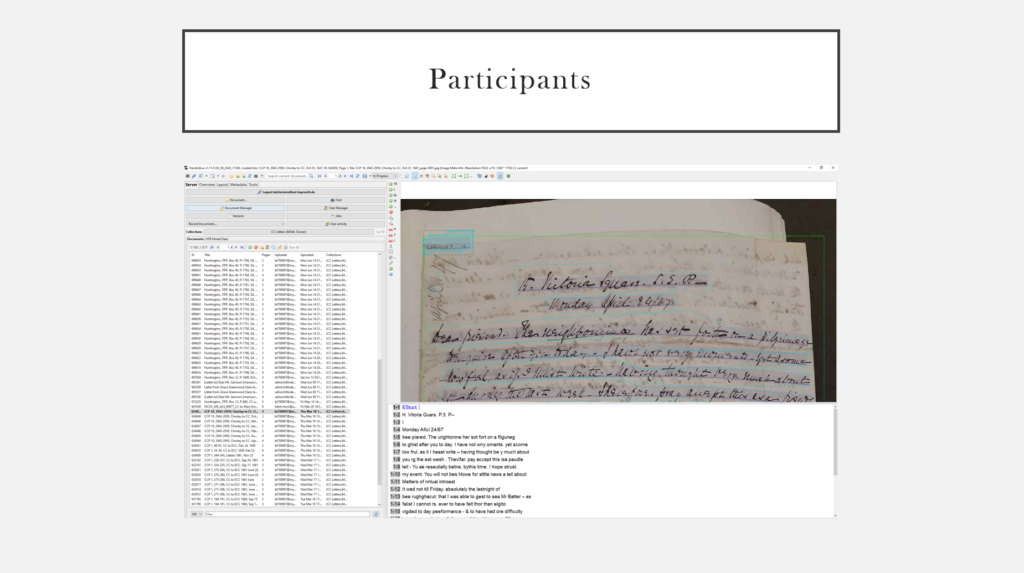GAAS 2021 paper on working with manuscripts (when that’s not what you’ve been trained to do)
With a slight delay, I’d like to add here the talk I gave recently at the 2021 Annual Conference of the German Association for American Studies as part of a panel on “Dispatches from the Method Wars: New Approaches to Cultural Agency and Participation in American Studies” (June 18, 2021). The CfP spurred some reflections on how my current research on gossip in the nineteenth century and my prior project on camp in contemporary culture have similar “issues,” when it comes to some of the methods or scholarly ideals of American Studies. More precisely: the paper was an opportunity for me to think through “being too close” and “too much participation.”
(I hope you’re not coming here looking for anwers, because I mostly had questions).
I have been accused of being “too close” to my object of study before, when I wrote my thesis on popular culture and was told (with apparent indignation) that I was only doing this because I ‘liked’ the stuff I was writing about. Henry Jenkins has introduced the term aca/fan to describe this “hybrid creature which is part fan and part academic.” While he uses the term affirmatively, the concern I encountered seems to have been that participation in one discourse (i.e. fandom) impedes proper participation in other discourses (i. e scholarship).
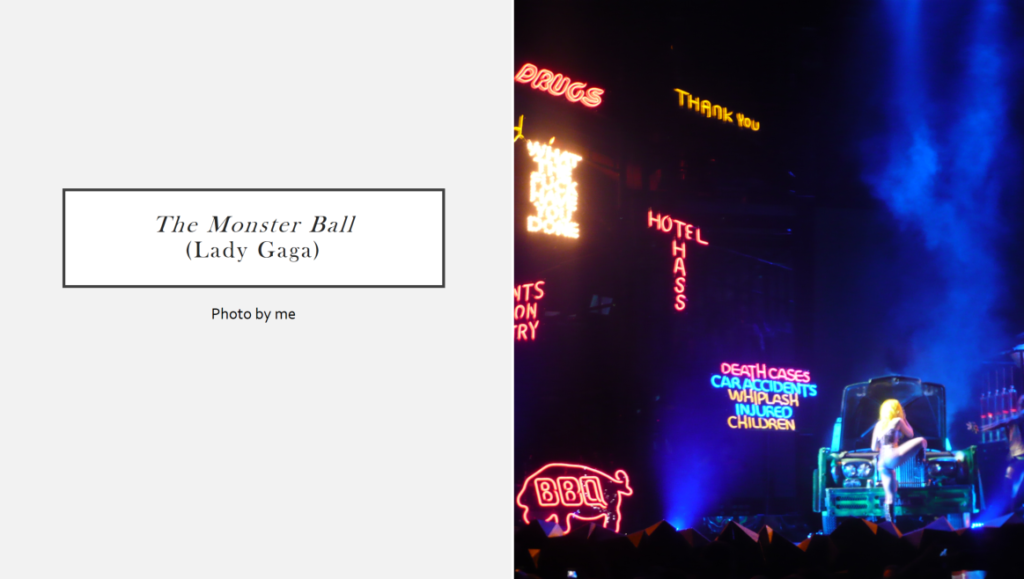
With my second book project on the knowledge and value of gossip in the nineteenth century, I meant to avoid similar issues by moving away from contemporary pop culture. Unfortunately, it seems, I have made matters worse. Over the last three years I have come to learn that being a fan of popular media before starting a research project has nothing on becoming engrossed with an object of study during a research project, especially as one encounters historical agents through their private letters and diaries. Some might suggest that I am becoming “too close” again to my object of study. But what if closeness – physical, affective, or epistemic – is necessary to scholarship? Maybe participation is the solution rather than the problem.
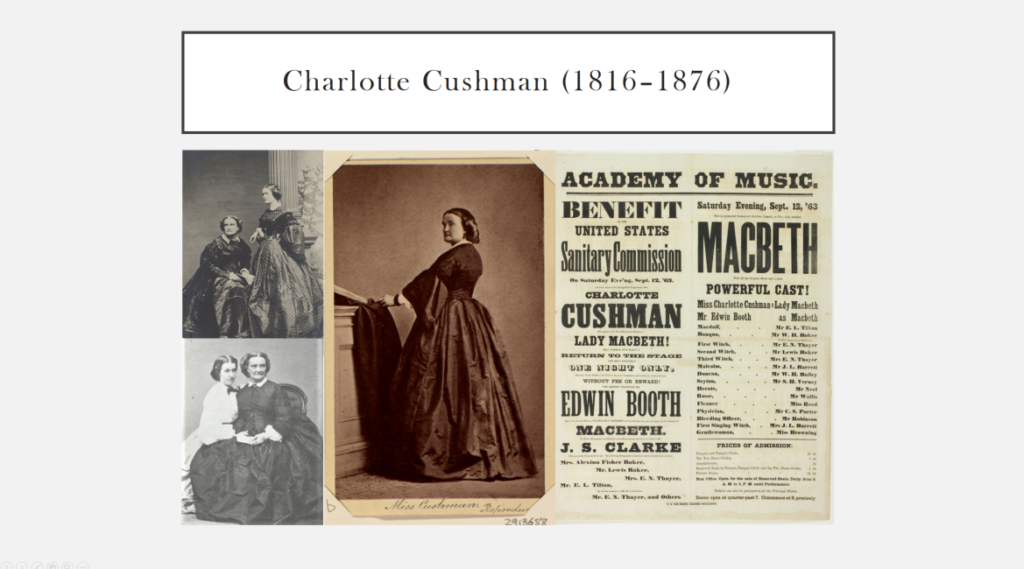
Spurred by these considerations – and with reference to debates about surface reading within American Studies and about affect within archival studies – I want to use my short presentation to offer some thoughts, maybe even provocations, on “participation” as a methodological challenge (as the panel CfP puts), specifically in pursuing American Studies in the archive and in an encounter with manuscripts.
The Author, the Paper, and Me
I have spent years now telling my students that “the author is dead,” a metaphor to help stir them away from intentional fallacy. Then I encountered the work of an actually dead author. Not just in the abstract sense of reading fiction or theory by someone who is incidentally deceased; instead in the more tangible sense of sitting down in an archive and opening a manuscript which I know I can only read, because the person who has written these words and touched these pages is not alive anymore. The “tactile and direct approach to the material,” as historian Arlette Farge has put it, “the feel of touching traces of the past” (Farge) is for many scholars a crucial part of the physical experience of working with manuscripts. Is it part of its method as well?
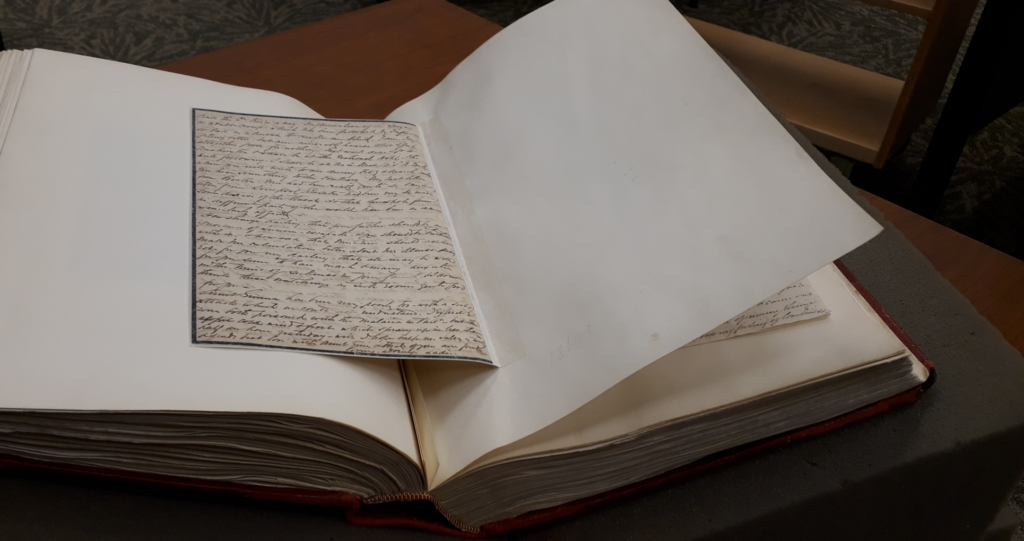
Recent work in critical archival studies would suggest that it is. Maryanne Dever, for example, in her recent book Paper, Materiality and the Archived Page (Dever, Paper, Materiality and the Archived Page) stresses the importance of being attuned to the materiality of the archival record. Which begs the question: How do I (as a scholar of American Studies) weigh the ever-important, ever-required textual evidence that I’ve been trained to look for as part of “close reading”… in the absence of text (because of lost paper material) and/or the overwhelming presence of material evidence? A central case study for Dever are letters from Greta Garbo to Mercedes de Acosta, which had been dismissed by most as “containing nothing much” because of their trivial content (and thus not meeting the expectations of ‘love letters). Dever, in contrast, wants to “extend [her understanding of archival evidence] beyond the written text of a personal correspondence to encompass, for example, the volume of correspondence or paper present (19). Drawing on fan scholar Joli Jensen’s work on the “‘obsessive appeal’ of ‘anything remotely connected to one’s research interests’ (Jensen 1992, 24, 21), Dever suggests that acknowledging the parallels between fandom and scholarship, “is fundamental to interpreting de Acosta’s auto-archival gestures … in her collection of ‘nothing’ much” ((Dever, “Greta Garbo’s Foot, or Sex, Socks, and Letters”)167).
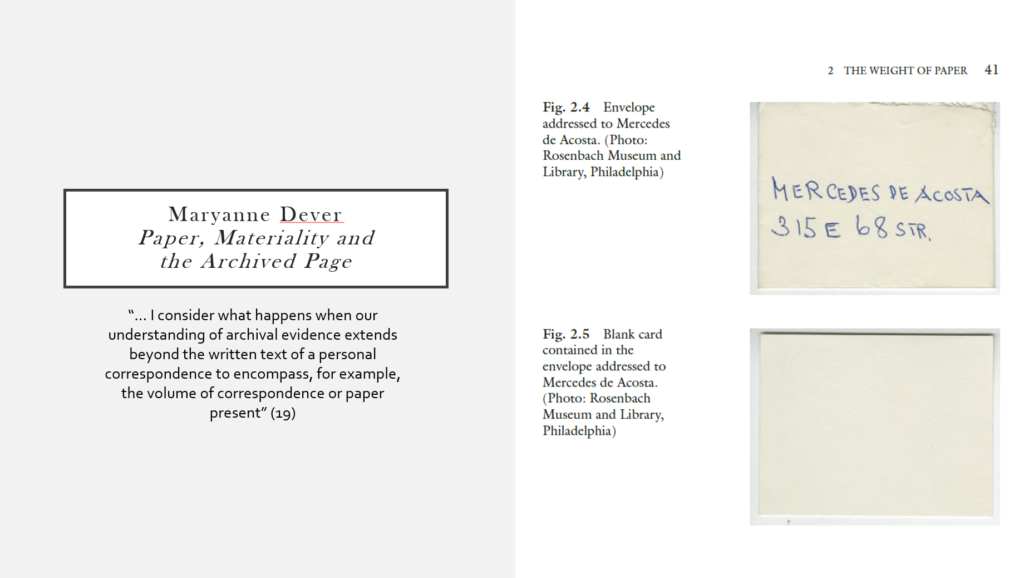
Besides this meaning residing in their materiality of manuscripts, they, as a form of life writing, are also different from “literature” with a capital L on a textual basis, because their author “does not want to pretend he/she is absent from the text” (Kadar). This, I’d argue, has implications for the process of interpretation. It might mean that the cultural agency lies with the author, not with the text. What if agency is expressed in a text not as disruption of discourses (which, full disclosure, I’ve been obsessed with before) – but simply in … being and participating? Maybe “critical description” (Best and Marcus) then really is more appropriate?
The Author, the Reader, and Me
Manuscripts furthermore not only “mean,” but also function differently than I’ve been trained to think of texts. Letters, for example, do not have an idealized or implied reader, but an intended reader – the person with whom the author entered the “epistolary pact,” as Cécile Dauphin et al. put it (per Lejeune’s autobiographical pact) (Dauphin et al.). That person is clearly not me – I am not “dearest.”
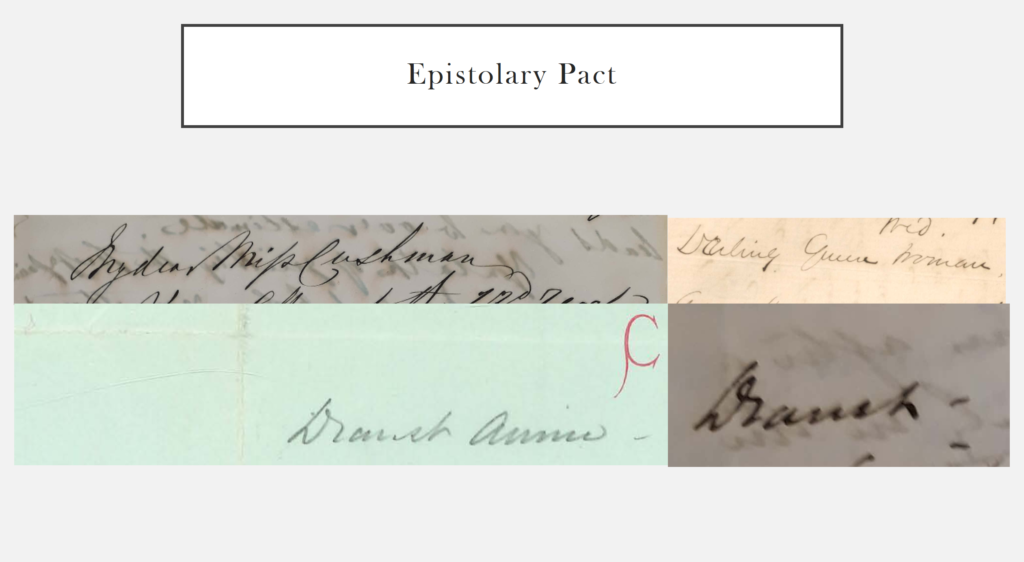
That brings with it ethical concerns … but also practical ones. And those, too, circle around the issue of participation and of “being close”. Over the course of the nineteenth century, letters lost their “public nature and function” (Dever 117). Instead, “a sense of assumed intimacy breathes from every line” (Meyer Spacks). Intimacy, maybe not incidentally, is also at the core of my research on gossip. An intimacy especially that is not sexual or only “what is closely held and personal”, but also “what is deeply shared with others” (Yousef). Gossip and letters equally rely on what Susan Wahl calls a “language of intimacy” (Wahl). In order to understand this language – not symptomatically, but simply its surface – once needs to become a participant in the intimate knowledge network from which it emerges. Highly tailored to “recipient and circumstance” (Dever), they (letters and gossip) and their idiosyncratic phrases and obscure references necessitate a level of biographical knowledge that is usually unnecessary for interpreting texts meant for public consumption. It also means that their gaps might not invite a symptomatic reading, to argue with Best and Marcus’ idea of surface reading, but might be – to quote Ann Stoler – simply “‘unwritten’ because [some things] go without saying” (Stoler).
The single letter, furthermore, is – in most cases of purely private communication at least – not actually “the text” I am concerned with. It only gains its meaning as part (participant) of a larger correspondence. That means that particularly those of us trained in literary studies, might need to ‘un-train’ yet another aspect of method: our attention to plot. Even without the almost impossible to avoid gaps left by missing responses, letters are perhaps uniquely resistant to coherent narratives (Spacks 69). As Daniel Karlin, editor of the letters between Robert Browning and Elizabeth Barrett warns: “the correspondence has a plot of which the letters themselves could not be aware” (Karlin). While we read these letters as a continuous story (or might be tempted to), they were written and received often with long gaps of time (and anxiety) in between. Moreover – and again moving us away from the text per se – the dates and places added above the salutary lines, the letters’ “metadata,” often more so than their content, provides crucial evidence of “the plot” and thus the correspondents’ cultural agency.
The Letters, the Others, and Me
Participation is key to the methods required by working with manuscripts also in a completely different, very practical sense: I am not working on my own. The material is too vast, access to complex. I cannot sit down with the annotated scholarly edition of a finite text which I bought online and begin my “reading.” Rather, I have to ask reference librarians and archivists for help. My research associate and, when I am lucky with additional funding applications, student assistants help with the transcription of sometimes seemingly impossible to read letters. I exchange scans with other scholars who might have used their limited time in the same manuscript reading room to scan other parts of a collection. Lots of people thus “participate” in the research “I” ostensibly produce. And those are only the people I know: what about those who only show up in the finding aid’s “notes” section as “gift by”? While they are rarely acknowledged, their decisions might shape my research more than almost any other factor.
Contingency thus seems to creep into my research in ways that seem to also have a bearing on my method: Intentional fallacy or not: we usually work from the assumption that the texts we work with are presented to us in the way the author planned for them to be consumed by a public audience.
I can’t say the same for manuscripts.
So, to conclude: in these and myriad other ways, my encounter with manuscripts has challenged me to re-think or at least make myself aware of some of the core assumptions and methods my discipline as taught me. Just like some letters on the page might be resistant to my attempts to read them (that is: decipher them), manuscripts as whole seem resistant to my methods and modes of reading. I am left to wonder how to best to justice to the of ‘aggregated’ meaning encountered in letters, journals, and similar cultural artifacts which are defined by their embeddedness in communicative networks and their openness to revision and addition (rather than their formal finiteness).
I’d also suggest that we should address scholars’ participation in the cultural agency of archival texts by virtue of making them available through research and transcriptions. It is after all to large extent my “investigative desire giving rise to their discovery” (Marshall et al.) – or at least their public availability in digitized form.
I thus want to make the case for acknowledging our own participation in bringing “dead authors” into the present – both literally and figuratively – and for reconsidering some of our methods vis-a-vis the textual and material specificity of manuscripts that incite us to be close to our object of study.
Thank you (again) to the panel organizers, Ilka Brasch (Hannover), @ilkabrasch and Alexander Starre (FU Berlin), @a_starre, for organizing a panel that sparked some of the most lively and most interesting Q&A sessions I’ve ever had the pleasure of attending.
- Best, Stephen, and Sharon Marcus. “Surface Reading: An Introduction.” Representations, University of California Press, 2009, pp. 1–21. Crossref, doi:10.1525/rep.2009.108.1.1.
- Dauphin, Cécile, et al. Ces Bonnes Lettres. Une Correspondance Familiale Au XIXe Siècle. Albin Miche, 1995.
- Dever, Maryanne. “Greta Garbo’s Foot, or Sex, Socks, and Letters.” Australian Feminist Studies, Informa UK Limited, May 2010, pp. 163–73. Crossref, doi:10.1080/08164641003762461.
- —. Paper, Materiality and the Archived Page. Palgrave, 2019.
- Farge, Arlette. The Allure of the Archives. Yale UP, 2013.
- Kadar, Marlene. Essays on Life Writing: From Genre to Critical Practice. University of Toronto Press, 1992.
- Karlin, Daniel. Robert Browning and Elizabeth Barrett. The Courtship Correspondence, 1845-1846. A Selection. Clarendon Press, 1989.
- Marshall, Daniel, et al. “Editors’ Introduction.” Radical History Review, Duke University Press, May 2015, pp. 1–10. Crossref, doi:10.1215/01636545-2849486.
- Meyer Spacks, Patricia. Gossip. Alfred A. Knopf, 1985.
- Stoler, Ann. Along the Archival Grain: Epistemic Anxieties and Colonial Common Sense. Princeton UP, 2009.
- Wahl, Susan. Invisible Relations. Stanford University Press, 1999.
- Yousef, Nancy. Romantic Intimacy. Stanford University Press, 2013, https://www.sup.org/books/title/?id=22828.
